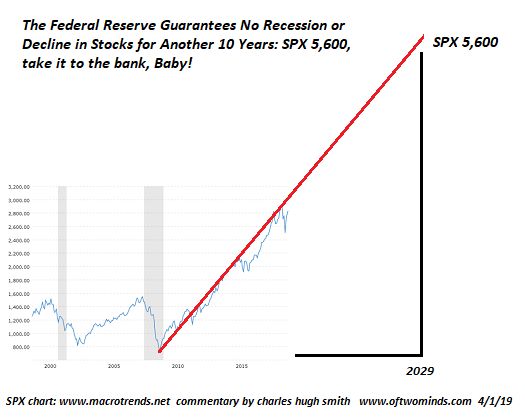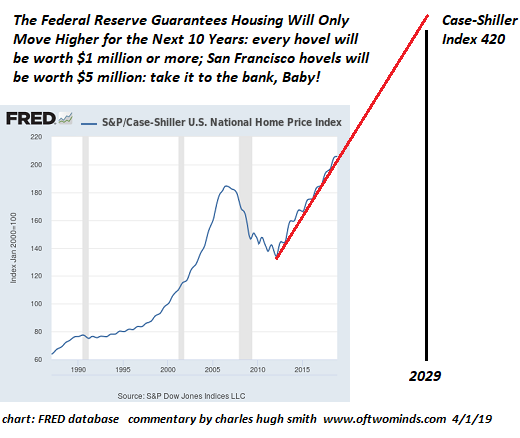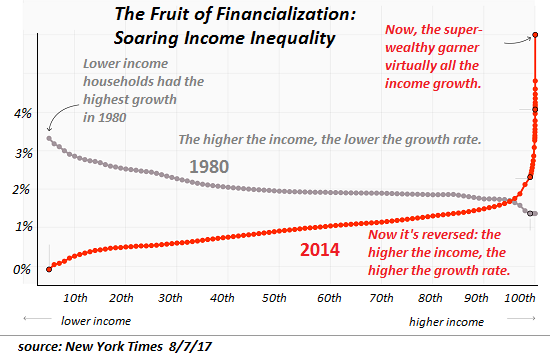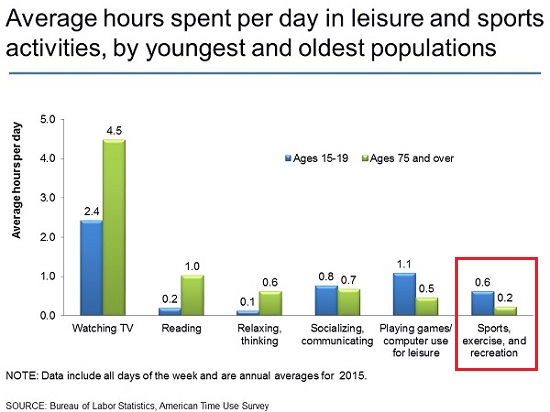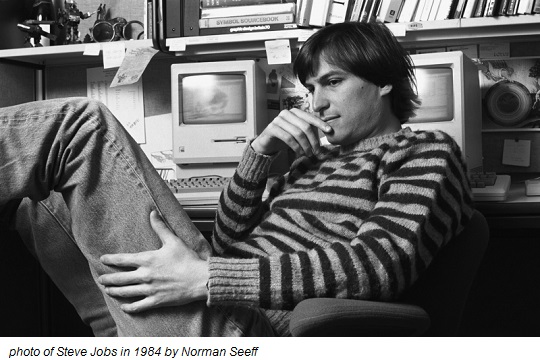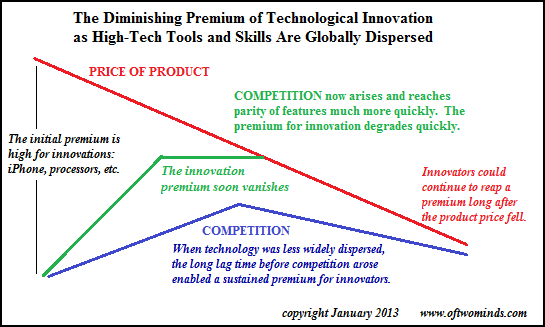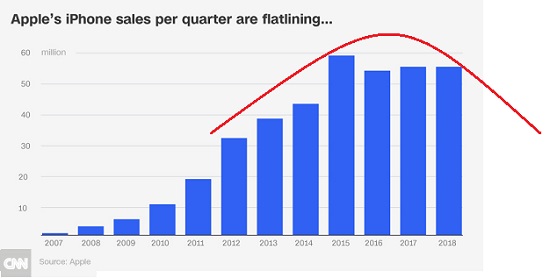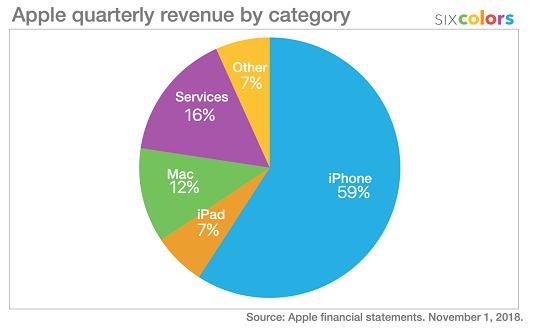There is nothing intrinsically profitable about either robotics or AI.
At the request of colleague/author Douglas Rushkoff (his latest book is Team Human), I'm publishing last week's Musings Report, which was distributed only to subscribers and patrons of the site.)
The core assumption of Universal Basic Income (UBI) and other plans to redistribute wealth and income more broadly is that the world is becoming wealthier, and so the pool of income and wealth that can be taxed is always expanding.
This pool of available wealth and income is so vast, we're assured, that taxing the super-wealthy will not really dent their wealth or the economy as a whole.
But what if the world is rapidly becoming poorer in every important sense?What if the decline in the standard of living of the bottom 90% of households that I've often addressed is not simply the result of the top 10% taking a greater share of the output (gains), but of the entire pie shrinking?
I believe the steady decline of the purchasing power of labor--the source of most households' income--is not just the result of way income is distributed, but of a steadily diminishing pool of real-world wealth.
We must start any discussion of total wealth/income by asking: what are we measuring with currencies such as dollars? What's not being measured?
As often noted in my writings, we optimize what we measure, and so since we measure financial accounts embedded in markets, we maximize the accumulation of currency and measure what it buys in markets.
But as I've explained in my books, markets only price goods and services in the here and now. They lack mechanisms to measure the lifecycle costs of the goods, the degradation of wild fisheries, the loss of soil fertility (depletion), the opportunity cost of what could have been done with money squandered on consumption, and so on.
The decline of fresh water tables and the shrinkage of glaciers that feed fresh water rivers don't make it into "price discovery" of markets.
As a result, the expansion of "money" creates an illusion of rising wealth when in fact the natural capital we depend on is declining rapidly. But since we don't measure this in "price," it's ignored.
If we combine the loss of purchasing power of labor with the tremendous loss of natural capital/wealth, it becomes self-evident that adding a zero to financial "wealth" hasn't made us actually wealthier in terms of what we can buy with our labor and what resources are still available to us for future "growth."
A second assumption of UBI/redistribution proponents is that robotics and artificial intelligence (AI) will greatly increase humanity's wealth by replacing human labor at a fraction of the cost.
This assumption is made so easily and often, it's easy to overlook that the claims never seem to originate from those actually manufacturing robots--a very capital and resource-intensive enterprise, and labor-intensive once maintenance and repair are added in.
There are a number of key economic assumptions being made beneath the surface of this claim that ignore all sorts of inconvenient realities.
Take the simple example of a Roomba robot vacuum. The presumption is this labor saving device will replace human labor. But since I don't pay myself to clean my own house, there is no reduction in labor costs; there is only an additional consumption of resources and capital.
Proponents of the idea that robotics/AI will generate vast new wealth that we can all tap without trade-offs overlook the enormously deflationary impact of technology in general and of commoditized technology specifically: once robotics and AI become commoditized (i.e. the bits and pieces and coding are available everywhere at a steadily decreasing cost), prices will drop, reducing profits to razor-thin margins.
This is the story of commoditized manufacturing in China, where few companies reap significant profits and most scrape by on extremely thin margins.
Why would commoditized robotics and AI software be any different?
Consider Uber and Lyft, both of which are losing billions of dollars operating at their current scale. Profits are presumed to emerge at some magical point when their incomes rise and the expenses drop. But given the presence of competition and the cost structure, how can these services raise prices enough to turn a profit?
As for eliminating the expense of drivers via self-driving cars: if we look at commoditized business models like Uber and Lyft, we find the labor component is actually rather marginal. Cutting $1 billion in costs by eliminating drivers presumes a monopoly and equipment and software that are proprietary, i.e. a means to push higher prices on a customer base with few other options.
But if we know anything about the push to self-driving cars, we know the competition in fierce and global, and all the necessary parts--sensors, artificial vision software, etc.-- are rapidly being commoditized.
The truth is these services are not inherently profitable: the cost of operating a very complex vehicle will never be near-zero, and neither will the liability. Many other transport options will always be available to customers, starting with walking, public transport, biking, arranging a ride with a friend and the "black market" ride-sharing that will inevitably arise to cut out Uber's share of the fee.
Technology that can be commoditized is fantastically deflationary: costs decline and profit margins soon go to near-zero.
For this reason alone, robotics and AI may well cut the cost of various goods and services but at the expense of profits.
There is an exception, of course: people will pay more for status. People pay inordinate sums for an Apple phone because it has intangible but oh-so coveted status. But there is no equivalent in the vast majority of commoditized sectors. Very few people will pay extra for an Uber ride based on the company's brand. What unique and highly coveted status is associated with Uber or Lyft? The answer is none, just as it is for digital memory, mobile phone cameras and thousands of other commoditized technologies.
Apple has status because it protects its proprietary integration of software and hardware which make it difficult to commoditize. But Android and cheap components are chipping away at the functional advantages of Apple's proprietary offerings.
There is only one Apple globally. Very few enterprises escape the commoditization of their business, and these generally have high barriers to entry. Semiconductor fabrication plants cost upwards of $2 billion each; that's a high barrier of entry to a highly volatile and uncertain market. Few companies are willing to gamble the $2 billion in a field already crowded with competitors.
Counting on hundreds of super-profitable corporations to generate vast new wealth to be taxed and redistributed ignores the real-world dynamics of technology, competition, and most importantly commoditization.
Let's summarize:
1. The problem is we have based our entire civilization on "growth," the never-ending expansion of consumption of resources, energy and capital, the the permanent expansion of everything: jobs, consumers, credit and so on.
Robotics and AI simply add to the planet's burden. They don't reduce it. Robots are intrinsically energy and resource-intensive, capital-intensive and complex. Every robot is one product cycle or one component failure away from being just another piece of industrial junk bound for the landfill or perhaps the recycling yard--but there's no guarantee the robot will be disposed of properly, either, as recycling complex manufactured goods is intrinsically costly.
AI software code may be "free" but the system to manifest AI in the real world is enormously resource and capital intensive: the cost of manufacturing chips is non-trivial, and power-hungry processors require huge amounts of energy to operate and replace.
2. Just as the high cost and complexity of robotics and AI is intrinsic, there is nothing intrinsically profitable about either robotics or AI. Merely replacing human labor doesn't automatically generate vast profits for decades; competitors will also eliminate their human labor. The more capital intensive the business, the more marginal the role of labor in the production process. Replacing human labor only generates profits until competitors eliminate their laborers, or until new technology obsoletes the entire business model.
3. The planet's natural capital and buffers are being exploited and consumed at a rate that guarantees disruption of essentials such as grain and fresh water. There are no cheap technological fixes to the depletion of natural capital. No robot or AI software can restore depleted soil or replace soil that washed away.
If we add in the loss of natural capital and the full lifecycle costs of our "growth"-dependent global system, we;re losing ground and becoming poorer by the day. Having central banks create more "money" can generate a phantom wealth for a short time, but as the saying has it, Nature Bats Last. Counting on phantom wealth to power an unsustainable system is delusional.
We are adding knowledge and information to the pool of humanity's knowledge, but if we don't use that "wealth" to change the fundamental flaws in "growth" and a dependency on phantom wealth, we're still becoming poorer by the day.
NOTE: Contributions/subscriptions are acknowledged in the order received. Your name and email remain confidential and will not be given to any other individual, company or agency.
Thank you, Kevin K. ($50), for your monstrously generous contribution to this site -- I am greatly honored by your steadfast support and readership.
| |
Thank you, Jim G. ($40), for your splendidly generous contribution to this site -- I am greatly honored by your steadfast support and readership.
|
Read more...
